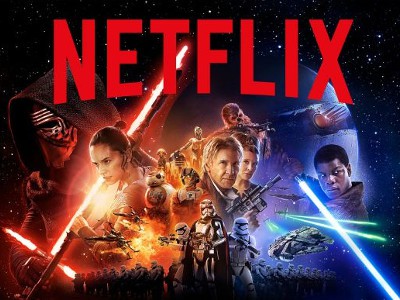
 The Netflix catalogue is constantly adding and dropping films, meaning that if you make a mental note to watch a film sometime later, you’d better get on it, or better yet just watch it immediately on the assumption that its shelf life is probably limited.
The Netflix catalogue is constantly adding and dropping films, meaning that if you make a mental note to watch a film sometime later, you’d better get on it, or better yet just watch it immediately on the assumption that its shelf life is probably limited.
Business wise, Netflix (NASDAQ:NFLX) is operating on the “land grab” principle, like Uber and Amazon, companies that don’t mind operating at a loss if the ultimate payoff is ubiquitous brand recognition for their respective areas of interest.
To accomplish that, though, they’ve got to make themselves a verb for the act of online video streaming, the way we now “google” things instead of searching for them.
In January, Netflix launched in 130 new countries on a single day, which puts it in every major market for video streaming other than China.
That’s been good news for their international growth strategy, but not great for their bottom line. Netflix’s forecast for growing its subscriber base in Q2 is well below analyst expectations, which has sent its stock much lower.
Wedbush Securities analyst Michael Pachter has set a target of US$45 on Netflix stock, which would basically be a collapse to half of what it’s worth now, at $97.81.
With the Olympics coming up, and the inability of video streaming services to tap in to the huge sports market, it is certain that fewer eyes will be on Netflix in the near future, not more.
Reasons for Netflix’s lack of international growth come down to a lack of local content in local languages and an over-reliance on English-language fare.
While English entertainment may go over well enough in India, the Philippines and Germany, it has far less traction in countries like Japan and Russia, where less than 5% of the population consider themselves fluent.
But in places like India and the Philippines, where English comprehension is less of a problem, the decision by Netflix not to drop their subscription price point is frankly stupid. Eight or nine dollars a month might not seem like a whole lot of money for middle class North Americans, but it’s a deal breaker in heavily populated countries that are hungry for online content but for whom that dollar figure is simply too high.
Even so, the combination of logistical problems are only partly responsible for why certain countries get to see certain content ahead of others, like the fact that Netflix Canada will soon be streaming the most recent Star Wars film while the Starz network in the U.S. retains exclusive rights for that film, leaving U.S. Netflix subscribers hungry and looking elsewhere for their Star Wars fix.
Meanwhile, the AllFlicks website has compiled a graph of the number of Netflix titles available by country.
No surprise that the United States has the largest number at 5,087 titles, comprising 37% of its total number of titles available globally.
Netflix has the rights to 13,612 titles in the 241 countries in which it operates.
And despite the fact that Star Wars fans will be happy when the lens-flare heavy reboot begins streaming on Netflix Canada later this year, we’re otherwise not actually that well positioned in the stream scheme of things when it comes to the nation’s Netflix catalogue.
Surprisingly, we’re better off than the U.K., Belgium and Saint Pierre et Miquelon, but lower than Haiti, Cuba and Belize, and well below Jamaica, the Turks and Caicos Islands and Martinique.
But even if Netflix ultimately goes south, Canadian fans can console themselves with the fact that we’ll always have Star Wars.

Leave a Reply
You must be logged in to post a comment.






 Share
Share Tweet
Tweet Share
Share




Comment